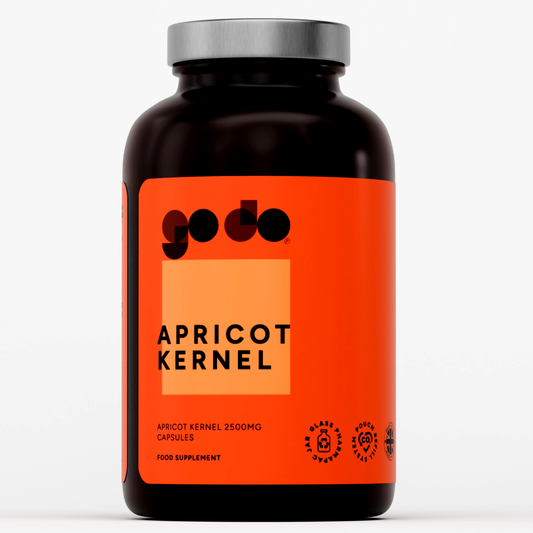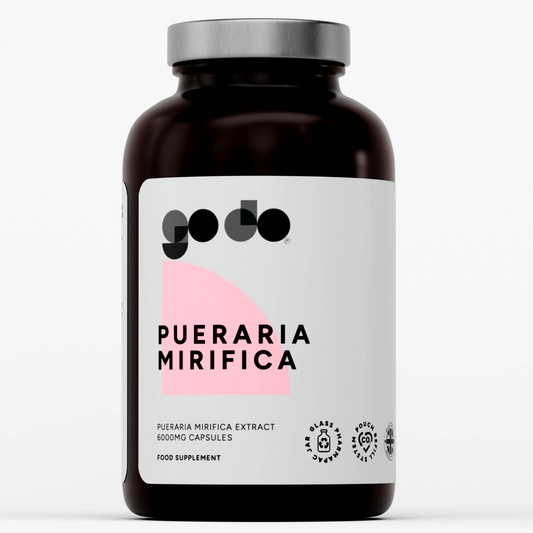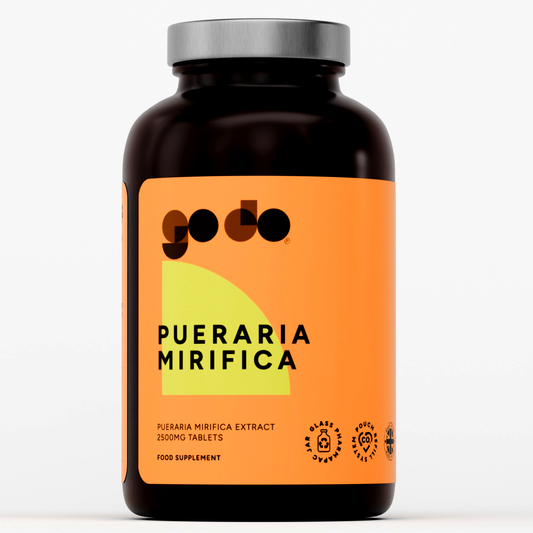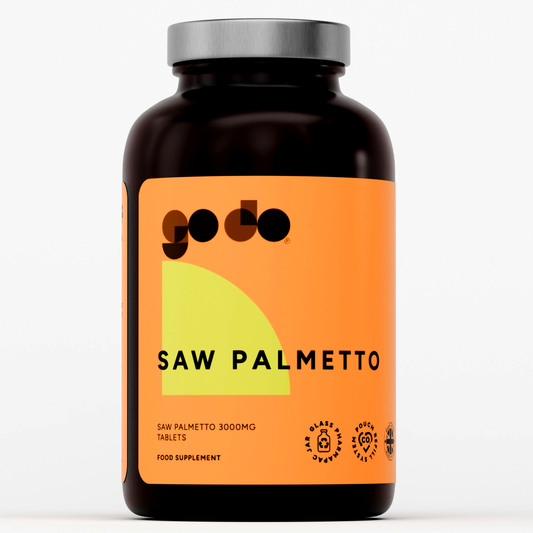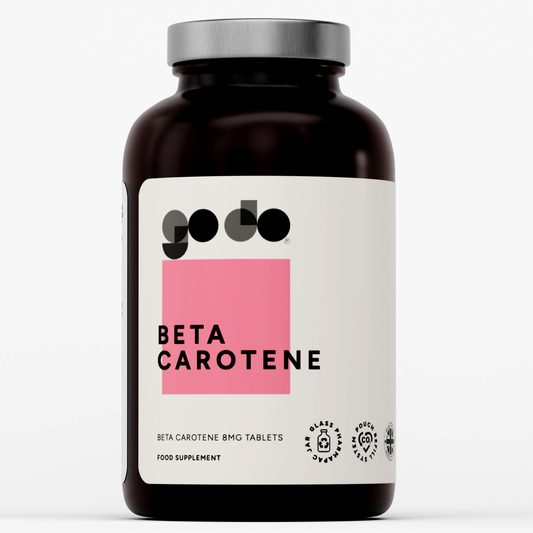Introduction to Vegetarian Ketogenic Eating
The ketogenic diet and vegetarianism might seem fundamentally incompatible at first glance, given that traditional ketogenic approaches rely heavily on animal proteins and fats while vegetarian diets emphasize plant-based foods that are often higher in carbohydrates. However, with careful planning, strategic food selection, and a thorough understanding of both nutritional approaches, it's entirely possible to successfully combine these two dietary philosophies for optimal health outcomes.
The vegetarian ketogenic diet represents a unique nutritional approach that harnesses the metabolic benefits of ketosis while maintaining ethical and environmental commitments to plant-based eating. This combination offers the potential for weight management, improved mental clarity, stable energy levels, and other ketogenic benefits while supporting sustainable food choices and animal welfare considerations that motivate many vegetarians.
Understanding the principles of ketogenic metabolism becomes even more crucial for vegetarians, as achieving and maintaining ketosis requires precise macronutrient ratios that can be challenging to achieve without animal products. The key lies in identifying high-fat, moderate-protein, low-carbohydrate plant foods while ensuring adequate nutrition and meal variety to support long-term adherence and health.
The success of a vegetarian ketogenic approach depends on thorough preparation, creative meal planning, and often supplementation to address potential nutritional gaps. This comprehensive approach ensures that the diet remains both effective for achieving ketosis and nutritionally complete for supporting optimal health throughout the implementation period.

Understanding Ketosis and Plant-Based Nutrition
The Science of Ketogenic Metabolism
Ketosis represents a metabolic state where the body shifts from primarily using glucose for energy to utilizing ketones produced from fat breakdown. This metabolic flexibility requires maintaining very specific macronutrient ratios, typically 70-80% of calories from fat, 15-25% from protein, and only 5-10% from carbohydrates, regardless of whether these macronutrients come from animal or plant sources.
The process of entering ketosis typically takes 2-7 days of carbohydrate restriction, during which the body depletes its glycogen stores and begins producing ketones in the liver from fatty acids. For vegetarians, this process remains the same, but achieving the necessary macronutrient ratios requires careful selection of plant foods that are naturally low in carbohydrates and high in healthy fats.
Ketone production creates an alternative fuel source that can cross the blood-brain barrier and provide steady energy to the brain and other organs. This metabolic state has been associated with improved mental clarity, stable energy levels, appetite suppression, and various health benefits including potential improvements in insulin sensitivity and inflammation markers.
The maintenance of ketosis requires consistent adherence to macronutrient targets, making food tracking and meal planning essential components of successful implementation. Vegetarians must be particularly vigilant about hidden carbohydrates in plant foods while ensuring adequate fat intake to maintain the metabolic state.
Understanding the difference between nutritional ketosis (blood ketone levels of 0.5-3.0 mmol/L) and higher levels associated with medical conditions helps vegetarians safely navigate this metabolic approach while monitoring their progress and adjusting their dietary strategies as needed.
Plant-Based Macronutrient Challenges
Achieving ketogenic macronutrient ratios on a vegetarian diet presents unique challenges, as many traditional vegetarian protein sources like legumes, grains, and some dairy products contain significant amounts of carbohydrates that can interfere with ketosis. Understanding these challenges enables strategic planning to overcome them while maintaining nutritional adequacy.
Traditional vegetarian protein sources such as beans, lentils, quinoa, and whole grains are typically too high in carbohydrates to fit within ketogenic parameters. This limitation requires vegetarians to rely more heavily on lower-carbohydrate protein sources including eggs, certain dairy products, nuts, seeds, and plant-based protein powders with minimal carbohydrate content.
The fat requirements for ketogenic eating can be more challenging to meet with plant foods alone, as many plant fats come packaged with carbohydrates or protein that can affect macronutrient ratios. Vegetarians must focus on pure fat sources like oils, avocados, nuts, and seeds while carefully managing their total macronutrient intake.
Fiber content in plant foods can complicate carbohydrate calculations, as net carbohydrates (total carbohydrates minus fiber) are what affect ketosis. Understanding how to calculate net carbs and choosing high-fiber, low-net-carb vegetables becomes crucial for maintaining ketosis while consuming adequate plant foods for nutrition and satiety.
Micronutrient density can be challenging to maintain when eliminating many traditional vegetarian staples. Careful selection of nutrient-dense, low-carbohydrate vegetables and strategic supplementation may be necessary to prevent deficiencies while maintaining ketosis.
Metabolic Adaptation Considerations
The metabolic adaptation to a vegetarian ketogenic diet may differ from traditional ketogenic approaches due to differences in protein sources, fat types, and micronutrient profiles. Understanding these differences helps optimize the transition period and long-term success of the dietary approach.
The adaptation period, often called "keto flu," may be influenced by the types of electrolytes and minerals commonly found in vegetarian diets. Plant-based diets often provide different mineral profiles compared to animal-based diets, potentially affecting the transition experience and electrolyte needs during adaptation.
Protein quality and amino acid profiles from vegetarian sources may influence muscle preservation and metabolic health during ketogenic adaptation. Combining different plant proteins and potentially incorporating complete protein sources like eggs can help ensure adequate amino acid intake for optimal metabolic function.
The anti-inflammatory compounds naturally present in many plant foods may actually enhance some of the metabolic benefits associated with ketosis, potentially providing additional advantages over traditional ketogenic approaches that rely heavily on animal products.
Digestive adaptation to higher fat intake from plant sources may differ from adaptation to animal fats, potentially requiring gradual increases in fat intake and attention to digestive comfort during the transition period.

Essential Foods for Vegetarian Keto
High-Fat Plant Foods
Success on a vegetarian ketogenic diet depends heavily on incorporating high-fat plant foods that provide substantial calories while keeping carbohydrate intake minimal. These foods form the foundation of the diet and must be consumed in adequate quantities to maintain ketosis while providing satiety and nutritional value.
Avocados represent one of the most important foods for vegetarian keto, providing approximately 15 grams of fat and only 2 grams of net carbohydrates per half fruit. Their creamy texture and mild flavor make them versatile for both savory and sweet applications while providing potassium, fiber, and monounsaturated fats that support cardiovascular health.
Nuts and seeds offer concentrated sources of fat and protein with relatively low carbohydrate content, though the specific ratios vary significantly between varieties. Macadamia nuts, pecans, and Brazil nuts are particularly well-suited for ketogenic eating due to their high fat content and low carbohydrate levels.
Coconut products including coconut oil, coconut butter, unsweetened coconut flakes, and coconut cream provide medium-chain triglycerides (MCTs) that are readily converted to ketones, potentially supporting easier entry into and maintenance of ketosis. These products also add tropical flavors and creamy textures to vegetarian keto meals.
Olives and olive oil provide healthy monounsaturated fats along with antioxidants and anti-inflammatory compounds. Extra virgin olive oil serves as an excellent base for salad dressings and cooking, while whole olives can be incorporated into meals and snacks for additional fat and flavor.
Low-Carb Vegetarian Proteins
Finding adequate protein sources that fit within ketogenic carbohydrate limits presents one of the biggest challenges for vegetarian keto dieters. Successful implementation requires identifying and incorporating protein sources that provide essential amino acids while minimizing carbohydrate impact.
Eggs represent the gold standard for vegetarian keto protein, providing complete amino acid profiles with virtually no carbohydrates and substantial fat content. Whole eggs can be prepared in numerous ways and incorporated into both meals and baked goods to boost protein content while maintaining ketogenic ratios.
High-fat dairy products including full-fat cheese, Greek yogurt, and cottage cheese can provide significant protein with moderate fat content and minimal carbohydrates. However, dairy tolerance and quality considerations may influence individual choices, and organic, grass-fed options may provide superior nutritional profiles.
Plant-based protein powders with minimal carbohydrate content can help bridge protein gaps while maintaining ketosis. Pea protein, hemp protein, and certain blended plant proteins can provide concentrated protein for smoothies, baking, and meal enhancement when selected carefully for low carbohydrate content.
Nuts and seeds, while primarily fat sources, also contribute meaningful protein to vegetarian keto diets. Hemp hearts, chia seeds, and various nuts provide protein along with essential fatty acids and minerals, though portion control is important due to their caloric density.
Tempeh and certain fermented soy products may fit into vegetarian keto diets in small quantities, providing protein and probiotics while contributing manageable amounts of carbohydrates. However, these foods require careful portion control and may not be suitable for all individuals following ketogenic protocols.
Nutrient-Dense Low-Carb Vegetables
Vegetables form the micronutrient foundation of a healthy vegetarian ketogenic diet, providing essential vitamins, minerals, antioxidants, and fiber while contributing minimal net carbohydrates. Strategic vegetable selection ensures nutritional adequacy while maintaining ketosis.
Leafy greens including spinach, arugula, kale, and lettuce provide exceptional nutrient density with minimal carbohydrate impact. These vegetables can be consumed in large quantities and form the base for salads, smoothies, and cooked dishes while providing folate, iron, vitamin K, and various antioxidants.
Cruciferous vegetables such as broccoli, cauliflower, cabbage, and Brussels sprouts offer substantial nutrition including vitamin C, fiber, and sulfur compounds while maintaining relatively low net carbohydrate content. These vegetables can be roasted, steamed, or incorporated into casseroles and side dishes.
Above-ground vegetables generally contain fewer carbohydrates than root vegetables, making choices like zucchini, bell peppers, cucumber, and asparagus excellent options for vegetarian keto diets. These vegetables provide variety, color, and nutrition while supporting ketosis maintenance.
Herbs and spices not only enhance flavor but also provide concentrated antioxidants and anti-inflammatory compounds with negligible carbohydrate content. Fresh herbs like basil, cilantro, and parsley can be used liberally, while spices like turmeric, ginger, and garlic powder add both flavor and health benefits.
Fermented vegetables including sauerkraut, kimchi, and pickled vegetables provide probiotics and enzymes while contributing minimal carbohydrates. These foods support digestive health and add tangy flavors that can enhance meal satisfaction on a restricted diet.

Meal Planning and Preparation Strategies
Weekly Meal Planning Framework
Successful vegetarian ketogenic eating requires systematic meal planning that ensures macronutrient targets are met while providing meal variety and nutritional adequacy. A structured approach to planning helps prevent last-minute food choices that could compromise ketosis while ensuring adequate preparation time for more complex plant-based keto meals.
Begin meal planning by calculating daily macronutrient targets based on individual caloric needs and ketogenic ratios. This foundation provides the framework for selecting foods and planning meals that will support ketosis while meeting nutritional requirements. Using tracking apps or spreadsheets can help organize this information and plan accordingly.
Plan meals around high-fat plant foods and low-carb vegetables, using protein sources to meet but not exceed protein targets. This approach ensures that fat intake remains sufficient for ketosis while preventing excessive protein that could potentially interfere with ketone production through gluconeogenesis.
Batch cooking and meal preparation strategies become particularly important for vegetarian keto success, as many suitable foods require more preparation time than conventional convenience foods. Planning prep sessions for washing and chopping vegetables, cooking grains alternatives, and preparing base ingredients can streamline daily meal assembly.
Create a rotation of go-to meals and snacks that meet macronutrient requirements and can be prepared quickly when time is limited. Having reliable backup options prevents reliance on inappropriate foods when hunger strikes or schedules become demanding.
Kitchen Setup and Essential Tools
Setting up a kitchen environment that supports vegetarian ketogenic eating involves organizing tools, ingredients, and systems that make meal preparation efficient and successful. The right equipment and organization can significantly impact long-term adherence and meal quality.
Food scales become essential tools for accurately measuring portions and tracking macronutrients, particularly for calorie-dense foods like nuts, oils, and avocados where small measurement errors can significantly impact daily totals. Digital scales with gram measurements provide the precision needed for successful ketogenic eating.
High-quality blenders and food processors enable creation of nut butters, cauliflower rice, vegetable noodles, and smoothies that form staples of vegetarian keto eating. These tools help transform whole foods into convenient, keto-friendly alternatives to traditional high-carb foods.
Storage systems for meal prep, including glass containers for prepared meals and proper storage for nuts, seeds, and oils, help maintain food quality while supporting preparation efficiency. Proper storage prevents waste and ensures that prepared foods maintain their nutritional value and safety.
Specialized tools like spiralizers for creating vegetable noodles, mandoline slicers for consistent vegetable preparation, and nut milk bags for making homemade plant milks can expand meal options while maintaining ketogenic parameters.
Stock the pantry with shelf-stable ketogenic staples including various oils, nuts, seeds, canned coconut products, and low-carb vegetables to ensure that meal preparation remains possible even when fresh shopping hasn't occurred recently.
Batch Cooking and Food Prep
Efficient batch cooking and food preparation strategies help overcome the additional time requirements often associated with vegetarian ketogenic eating while ensuring that suitable foods are always available for meals and snacks.
Dedicate specific times each week to washing, chopping, and storing vegetables for easy meal assembly throughout the week. Pre-washed salad greens, chopped bell peppers, and prepared cauliflower rice can significantly reduce daily cooking time while ensuring vegetables remain fresh and appealing.
Prepare larger quantities of base ingredients like nut-based sauces, seed crackers, and vegetable-based casseroles that can be portioned and stored for multiple meals. These foundation foods provide convenient building blocks for assembling complete meals throughout the week.
Cook multiple preparations of eggs, which store well and can be incorporated into various meals throughout the week. Hard-boiled eggs, egg salad, and baked egg dishes provide ready protein sources that require no additional preparation time.
Prepare snack portions of nuts, seeds, and other portable keto foods in individual containers to prevent overeating while ensuring convenient access to appropriate foods when hunger occurs between meals.
Create freezer-friendly meals and components that can be prepared in larger batches and stored for longer periods. Soups, casseroles, and prepared vegetable mixtures can provide convenient meal options during busy periods or when fresh ingredients aren't available.
Nutritional Considerations and Supplementation
Essential Nutrient Monitoring
Vegetarian ketogenic diets require careful attention to nutritional adequacy, as the elimination of many traditional vegetarian foods combined with the restrictions of ketogenic eating can create potential gaps in essential nutrients. Systematic monitoring and strategic food selection help prevent deficiencies while maintaining ketosis.
Vitamin B12 monitoring becomes particularly important for vegetarians following ketogenic diets, as many traditional B12 sources like fortified grains are eliminated. Regular testing and supplementation may be necessary to maintain adequate levels, particularly for long-term adherents to vegetarian keto eating.
Iron absorption can be challenging on vegetarian diets, and ketogenic restrictions may limit access to some iron-rich plant foods. Combining iron-rich vegetables with vitamin C sources and monitoring iron status through regular testing helps prevent deficiency while maintaining dietary restrictions.
Calcium intake requires attention when dairy consumption is limited or eliminated, as many calcium-rich plant foods are too high in carbohydrates for ketogenic eating. Strategic selection of low-carb calcium sources and potential supplementation may be necessary for bone health.
Omega-3 fatty acid intake needs monitoring since traditional vegetarian sources like flax and chia provide ALA omega-3s that must be converted to EPA and DHA. Algae-based omega-3 supplements may be beneficial for ensuring adequate intake of long-chain omega-3 fatty acids.
Zinc, magnesium, and other minerals commonly found in eliminated foods require attention through careful food selection and potential supplementation. Regular assessment of mineral status helps guide supplementation decisions and food choices.
Strategic Supplementation
Well-chosen supplements can fill nutritional gaps and support optimal health on a vegetarian ketogenic diet while ensuring that restrictive eating doesn't compromise long-term wellness. Strategic supplementation addresses common deficiency risks while supporting the metabolic demands of ketosis.
A high-quality multivitamin specifically designed for vegetarians can provide insurance against micronutrient gaps while supplying nutrients that may be limited in ketogenic food selections. Look for formulations that provide adequate B vitamins, minerals, and other nutrients commonly limited in restricted diets.
Electrolyte supplementation often becomes necessary during ketogenic adaptation and may remain beneficial long-term, as ketosis naturally increases electrolyte losses. Sodium, potassium, and magnesium supplementation can help prevent common side effects while supporting optimal hydration and cellular function.
Digestive enzyme supplements may support the digestion of higher fat intake that characterizes ketogenic eating, particularly during the adaptation period when the body is adjusting to processing larger amounts of dietary fat. Lipase-containing enzymes can help optimize fat digestion and absorption.
Fiber supplements may help maintain digestive health when vegetable fiber intake is limited by carbohydrate restrictions. Psyllium husk and other low-carbohydrate fiber sources can support regularity while providing minimal impact on ketosis.
Probiotics support digestive health and may be particularly beneficial when dietary changes alter gut microbiome composition. Choose formulations that don't contain added sugars or other ingredients that could impact ketosis.
Hydration and Electrolyte Balance
Proper hydration and electrolyte balance become particularly important on ketogenic diets due to the natural diuretic effect of ketosis and the potential for increased electrolyte losses. Vegetarians may have different baseline electrolyte status due to their typical dietary patterns, making attention to these factors crucial for success.
Increased water intake is typically necessary on ketogenic diets due to the diuretic effect of ketosis and the need to support increased fat metabolism. Aim for adequate hydration based on thirst, urine color, and individual needs while being mindful of electrolyte replacement.
Sodium needs often increase on ketogenic diets as insulin levels drop and the kidneys excrete more sodium. This increased need may be particularly noticeable for vegetarians who typically consume less sodium than omnivores. Sea salt, pink salt, or other natural sodium sources can help meet increased needs.
Potassium intake requires attention, as many high-potassium foods like bananas and potatoes are eliminated on ketogenic diets. Low-carb potassium sources like avocados, leafy greens, and nu-salt alternatives can help maintain adequate intake while supporting ketosis.
Magnesium supplementation often becomes beneficial on ketogenic diets, as magnesium supports hundreds of enzymatic reactions involved in fat metabolism and energy production. Magnesium also supports sleep quality and muscle function while potentially reducing adaptation symptoms.
Monitor hydration status and electrolyte balance through attention to symptoms like headaches, fatigue, muscle cramps, or changes in energy levels that may indicate imbalances requiring dietary or supplemental adjustments.

Sample Meal Plans and Recipes
7-Day Starter Meal Plan
This comprehensive meal plan provides a foundation for beginning vegetarian ketogenic eating while ensuring adequate nutrition and meal variety. Each day meets ketogenic macronutrient ratios while incorporating diverse plant foods for optimal nutrition and palatability.
Day 1 Sample Menu:
- Breakfast: Avocado and spinach omelet cooked in coconut oil with a side of sautéed mushrooms
- Lunch: Large mixed green salad with hemp hearts, olives, avocado, and olive oil vinaigrette
- Dinner: Cauliflower rice stir-fry with tofu, low-carb vegetables, and sesame oil
- Snacks: Macadamia nuts and cucumber slices with full-fat cream cheese
Day 2 Sample Menu:
- Breakfast: Coconut flour pancakes topped with almond butter and a few raspberries
- Lunch: Zucchini noodles with pesto made from basil, pine nuts, and olive oil
- Dinner: Stuffed bell peppers filled with cauliflower rice, cheese, and herbs
- Snacks: Celery sticks with almond butter and chia seed pudding made with coconut milk
Day 3 Sample Menu:
- Breakfast: Smoothie made with coconut milk, spinach, avocado, and protein powder
- Lunch: Caprese salad with fresh mozzarella, tomatoes, and basil drizzled with olive oil
- Dinner: Eggplant lasagna using thin eggplant slices instead of pasta with ricotta and low-carb marinara
- Snacks: Olives and cheese cubes, handful of pecans
Continue this pattern throughout the week, varying ingredients while maintaining macronutrient ratios and ensuring adequate variety to prevent boredom and support nutritional adequacy.
Quick and Easy Recipe Collection
Having a collection of simple, reliable recipes helps maintain vegetarian ketogenic eating even during busy periods when time for meal preparation is limited. These recipes focus on minimal ingredients and preparation time while meeting macronutrient requirements.
Avocado Egg Boats:
Cut avocados in half, remove a small amount of flesh to create a larger well, crack an egg into each half, season with salt and pepper, and bake until eggs are set. This provides a complete meal with optimal fat and protein ratios in minimal preparation time.
Cauliflower Mac and Cheese:
Steam cauliflower florets until tender, then toss with a cheese sauce made from cream cheese, heavy cream, and shredded cheese. This provides comfort food satisfaction while maintaining ketogenic parameters.
Keto Chocolate Mousse:
Blend avocado, cocoa powder, coconut cream, and stevia or other keto-friendly sweetener until smooth and creamy. This dessert satisfies sweet cravings while providing healthy fats and minimal carbohydrates.
Zucchini Chips:
Slice zucchini thinly, toss with olive oil and seasonings, then bake until crispy. These provide a satisfying snack that replaces traditional high-carb chips while adding vegetables to the diet.
Seed Crackers:
Combine various seeds with water and seasonings, spread thinly on dehydrator sheets or parchment paper, and dehydrate or bake until crispy. These provide fiber and healthy fats while serving as vehicles for other keto foods.
Advanced Recipe Techniques
As comfort with vegetarian ketogenic cooking develops, more advanced techniques can expand meal options while maintaining nutritional requirements. These techniques help create satisfying alternatives to traditional high-carb foods while adding variety and culinary interest.
Cauliflower Rice Variations:
Master multiple preparations of cauliflower rice including steamed, sautéed, and roasted versions with different seasonings and add-ins. Cauliflower rice can replace traditional grains in most applications while providing vegetables and fiber.
Nut and Seed Cheese Alternatives:
Learn to create cheese-like products from nuts and seeds through soaking, blending, and fermentation techniques. These alternatives can provide variety for those avoiding dairy while adding protein and healthy fats.
Vegetable Noodle Mastery:
Develop skills with spiralizers and other tools to create noodles from zucchini, cucumber, and other low-carb vegetables. Master cooking techniques that prevent watery, overcooked results while maintaining appealing textures.
Keto Baking Fundamentals:
Learn to work with alternative flours like almond flour, coconut flour, and flax meal to create breads, muffins, and other baked goods that satisfy cravings while maintaining ketogenic ratios.
Fermentation Projects:
Explore fermented vegetables and other probiotic foods that add flavor and beneficial bacteria while contributing minimal carbohydrates to the diet.
Overcoming Common Challenges
Social and Lifestyle Integration
Successfully maintaining a vegetarian ketogenic diet requires navigating social situations, restaurant dining, and lifestyle challenges that can make adherence difficult. Developing strategies for these situations helps maintain long-term success while preserving social connections and lifestyle enjoyment.
Restaurant dining presents particular challenges for vegetarian keto dieters, as most restaurants cater to either traditional ketogenic eaters or vegetarians, but rarely both simultaneously. Research menus in advance, communicate dietary needs clearly to servers, and be prepared to modify menu items to meet requirements.
Social gatherings often center around foods that don't fit vegetarian ketogenic parameters. Offer to bring appropriate dishes to share, eat beforehand if necessary, and focus on the social aspects rather than the food. Having strategies for politely declining inappropriate foods helps maintain adherence without creating social awkwardness.
Travel requires advance planning to ensure appropriate food availability. Research grocery stores and restaurants at destinations, pack portable keto-friendly foods, and consider accommodations with kitchen facilities when possible.
Family meal planning can be challenging when household members follow different dietary approaches. Focus on preparing base ingredients that can be modified for different dietary needs, and communicate the importance of the dietary approach to gain family support and understanding.
Work and school environments may not provide suitable food options. Pack meals and snacks consistently, and consider investing in insulated bags or other tools that maintain food quality throughout the day.
Managing Cravings and Hunger
The transition to vegetarian ketogenic eating often involves managing cravings for eliminated foods while ensuring adequate satiety from allowed foods. Understanding the physiological and psychological aspects of cravings helps develop effective management strategies.
Carbohydrate cravings are common during the initial adaptation period as the body adjusts to using fat and ketones for fuel instead of glucose. These cravings typically diminish as ketosis becomes established, but having appropriate low-carb alternatives available can help manage difficult periods.
Sweet cravings can be addressed through keto-friendly desserts and treats made with appropriate sweeteners and high-fat ingredients. Having satisfying alternatives available prevents feelings of deprivation that could lead to dietary abandonment.
Texture cravings for crunchy, chewy, or other specific textures can be addressed through creative food preparation and appropriate substitutes. Seed crackers, roasted vegetables, and other preparations can provide satisfying textures while maintaining dietary parameters.
Hunger management often improves as ketosis becomes established and appetite regulation improves. However, ensuring adequate fat intake and meal timing can help prevent excessive hunger during the adaptation period.
Emotional eating triggers require non-food coping strategies including stress management, adequate sleep, and other lifestyle factors that support emotional well-being without relying on inappropriate foods.
Plateau Management and Troubleshooting
Weight loss plateaus and other challenges are common during extended periods of ketogenic eating and require systematic troubleshooting to overcome while maintaining nutritional adequacy and health.
Weight loss plateaus may occur due to metabolic adaptation, changes in body composition, or subtle increases in carbohydrate intake that interfere with ketosis. Careful review of food intake, macronutrient ratios, and ketone levels can help identify potential causes.
Digestive issues may arise from the high fat content or changes in fiber intake associated with vegetarian ketogenic eating. Gradual dietary changes, appropriate supplementation, and attention to individual tolerance levels can help optimize digestive comfort.
Energy fluctuations during adaptation are normal but may require adjustments in electrolyte intake, meal timing, or other factors. Monitoring energy patterns and correlating them with dietary factors helps identify optimal approaches for individual needs.
Ketone testing can provide objective feedback about whether ketosis is being maintained, helping troubleshoot issues when progress stalls or symptoms suggest problems with the dietary approach.
Medical monitoring becomes important for individuals with health conditions or those following ketogenic approaches long-term. Regular assessment of relevant health markers ensures that the dietary approach continues to support rather than compromise health.

Long-Term Success and Sustainability
Building Sustainable Habits
Long-term success with vegetarian ketogenic eating requires developing sustainable habits and systems that can be maintained over extended periods without compromising health, social connections, or quality of life. Focus on building practices that become automatic rather than requiring constant willpower and decision-making.
Establish consistent meal timing and preparation routines that work with individual schedules and preferences. Regular eating patterns help maintain stable blood sugar and energy levels while reducing the mental energy required for constant meal planning and decision-making.
Develop a reliable repertoire of go-to meals and snacks that meet macronutrient requirements and can be prepared quickly and easily. Having automatic food choices reduces decision fatigue while ensuring dietary adherence during busy or stressful periods.
Create support systems including like-minded friends, online communities, or healthcare providers who understand and support the dietary approach. Having appropriate support helps navigate challenges and maintains motivation during difficult periods.
Invest in kitchen equipment, food storage systems, and other tools that make meal preparation more efficient and enjoyable. The right equipment can significantly reduce the time and effort required for dietary adherence while improving meal quality and variety.
Plan for flexibility and occasional modifications that accommodate special circumstances, travel, or changing life situations. Having strategies for temporary adjustments helps prevent all-or-nothing thinking that could lead to complete dietary abandonment.
Monitoring Health Markers
Regular monitoring of relevant health markers helps ensure that vegetarian ketogenic eating continues to support optimal health while identifying any potential issues that may require dietary modifications or medical attention.
Basic health markers including weight, energy levels, sleep quality, and digestive function provide important feedback about how well the dietary approach is working for individual needs. Regular self-assessment helps identify trends and potential issues before they become problematic.
Laboratory testing for nutrients commonly at risk in vegetarian diets including vitamin B12, iron, zinc, and omega-3 fatty acids helps prevent deficiencies while guiding supplementation decisions. Annual or biannual testing provides objective feedback about nutritional status.
Cardiovascular markers including blood pressure, cholesterol levels, and inflammatory markers help assess the cardiovascular effects of the dietary approach. Many people experience improvements in these markers on ketogenic diets, but individual responses can vary.
Blood glucose and insulin markers provide insights into metabolic health and the effectiveness of the ketogenic approach for blood sugar management. Individuals with diabetes or pre-diabetes may require more frequent monitoring during dietary changes.
Ketone testing, while not necessary for everyone, can provide objective feedback about whether ketosis is being maintained and help troubleshoot issues when progress stalls or symptoms suggest problems with the approach.
Transitioning and Modifications
The ability to modify or transition away from strict vegetarian ketogenic eating when appropriate ensures that the dietary approach remains a tool for health rather than a rigid restriction that may not suit all life circumstances or health needs.
Cyclical ketogenic approaches that alternate between periods of strict ketosis and higher carbohydrate intake may provide flexibility for some individuals while maintaining many of the benefits of ketogenic eating. These approaches can accommodate special occasions, athletic performance needs, or psychological preferences for variety.
Gradual transitions to less restrictive eating patterns can help maintain many of the benefits achieved through ketogenic eating while allowing greater food flexibility. Slow increases in carbohydrate intake help identify individual tolerance levels while preventing rapid weight regain or other negative effects.
Seasonal modifications may allow for greater variety during certain times of year while maintaining ketogenic approaches during periods when the benefits are most needed or desired. This flexibility can help maintain long-term adherence while accommodating natural preferences for seasonal eating patterns.
Life stage considerations may require modifications to accommodate changing nutritional needs during pregnancy, aging, or health conditions that affect dietary requirements. Having flexibility to modify the approach ensures that health remains the primary priority rather than rigid adherence to dietary rules.
Maintenance strategies for preserving benefits after transitioning away from strict ketogenic eating help ensure that positive changes are maintained while allowing greater dietary freedom. These strategies might include intermittent fasting, continued emphasis on whole foods, or periodic returns to ketogenic eating.

Conclusion: Embracing Vegetarian Ketogenic Success
The vegetarian ketogenic diet represents a sophisticated approach to nutrition that combines the metabolic benefits of ketosis with the ethical and environmental values of plant-based eating. While this combination presents unique challenges requiring careful planning and commitment, the potential benefits make it a worthwhile consideration for individuals seeking to optimize their health while maintaining their vegetarian principles.
Success with vegetarian ketogenic eating depends on thorough preparation, strategic food selection, and ongoing attention to nutritional adequacy and health monitoring. The investment in learning appropriate meal planning, cooking techniques, and troubleshooting strategies pays dividends in improved health outcomes and dietary satisfaction when implemented thoughtfully and consistently.
The flexibility to modify and adapt the approach based on individual needs, life circumstances, and health responses ensures that vegetarian ketogenic eating can serve as a valuable tool rather than a restrictive burden. This adaptability helps maintain long-term success while preserving the benefits achieved through committed implementation.
The growing availability of vegetarian keto-friendly foods, recipes, and resources makes this dietary approach increasingly accessible while community support helps navigate challenges and maintain motivation throughout the journey. These resources continue to expand as more people discover the benefits of combining vegetarian and ketogenic principles.
For vegetarians considering ketogenic eating, the evidence supporting potential benefits combined with strategies for overcoming challenges provides a roadmap for successful implementation. With proper planning, realistic expectations, and commitment to health monitoring, vegetarian ketogenic eating can provide a powerful approach to nutrition that aligns with both health goals and personal values.
The journey toward vegetarian ketogenic success requires patience, experimentation, and willingness to learn from both successes and setbacks. This process of discovery helps develop a personalized approach that maximizes benefits while maintaining sustainability and enjoyment in eating, creating a foundation for long-term health and wellness that honors both nutritional science and personal convictions.





